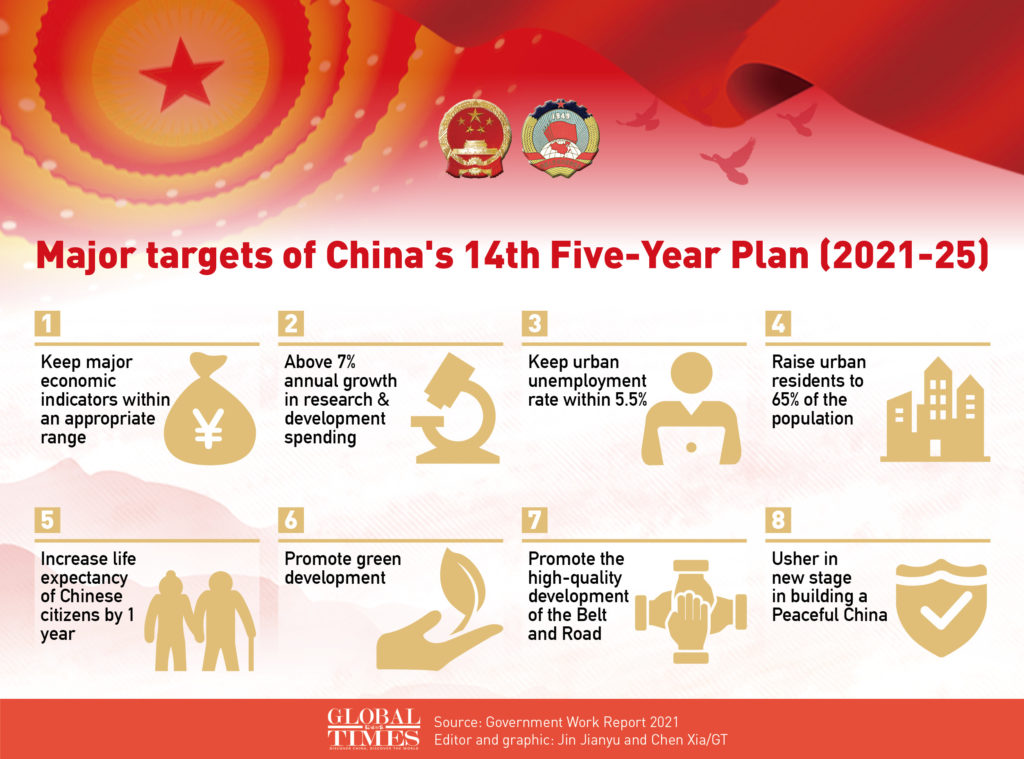Every year in the month of March, the city of Beijing nearly grinds to a halt for the annual “Two Meetings”—the gathering of the National People’s Congress (NPC, China’s legislative body) and the National People’s Consultative Conference (NPCC, an advisory body to the NPC). Here’s how I described them in a post in 2016:
While the Chinese Communist Party (specifically the Standing Committee of the Politburo) makes all the decisions, the National People’s Congress (NPC) “approves” the decisions, thus giving the impression that representatives of the people are voting on the laws. The NPC is sometimes referred to as China’s parliament or legislature, but it only meets in session once a year (in March) and the proposed laws are never voted down. This is one of the two “meetings.”
The other meeting is the China People’s Political Consultative Conference (NPPCC). This group is made up of delegates from various segments of society (education, arts, religion, sports, etc.) whose main function is to make suggestions to the NPC regarding laws and regulations.
Last year the “Two Meetings” were postponed to May due to the COVID crisis. I did a reading roundup, which can be found here. What follows is the roundup of this year’s meetings. As always, they provide an interesting look at what the party-state claims to have accomplished in the past year, and where it intends to go. For more background on the meetings, see this FAQ.
Significant developments that emerged from this year’s Congress include:
- Announcing the “earthly miracle” of poverty elimination;
- Announcement of plans to develop key technologies to reduce dependency on the United States and Europe;
- The adoption of a new law that will alter the electoral process in Hong Kong;
- A projection of 6% economic growth in 2021;
- Adoption of the 14th Five-Year Plan.
For those interested in taking a deeper look at the doings of the “Two Meetings,” below are some resources and articles to help.
An unofficial translation of the 14th Five-year Work Plan can be found here.
For inside analysis, I recommend the following:
- A special section maintained by Xinhua (China’s official news agency).
- “China’s Five-year Plan to Lead Global Recovery” (March 8, Global Times), which includes this helpful graphic:
For outside analysis, I recommend the following resources:
- “Early Warning Brief–China’s NPC and CPPCC: Xi Defies the West by Boosting Technological Self-Sufficiency and Crushing Hong Kong’s Freedoms” (March 9, 2021, Jamestown China Brief).
- “Five Foreign Policy Take-aways from Li Keqiang’s Work Report” (March 10, 2021, The Diplomat).
- “The X Factor” (March 9, 2021, China Media Project).
- “Analysis: Xi Jinping’s two cups signal there’s plenty of hot tea left” (March 11, 2021, Nikkei Asia).
- “China All but Ends Hong Kong Democracy with ‘Patriots Only’ Rule” (March 11, 2021, The Wall Street Journal).
- “China’s 2021 National People’s Congress: Key takeaways” (March 11, 2021, DW).
- “2021 NPC Session: NPC’s Hong Kong Electoral Overhaul Decision Explained” (March 11, 2021, NPC Observer).
Until next year . . .
Image credit: Anne Tan, via Flickr.

Joann Pittman
Joann Pittman is Vice President of Partnership and China Engagement and editor of ZGBriefs. Prior to joining ChinaSource, Joann spent 28 years working in China, as an English teacher, language student, program director, and cross-cultural trainer for organizations and businesses engaged in China. She has also taught Chinese at the University …View Full Bio
Are you enjoying a cup of good coffee or fragrant tea while reading the latest ChinaSource post? Consider donating the cost of that “cuppa” to support our content so we can continue to serve you with the latest on Christianity in China.
